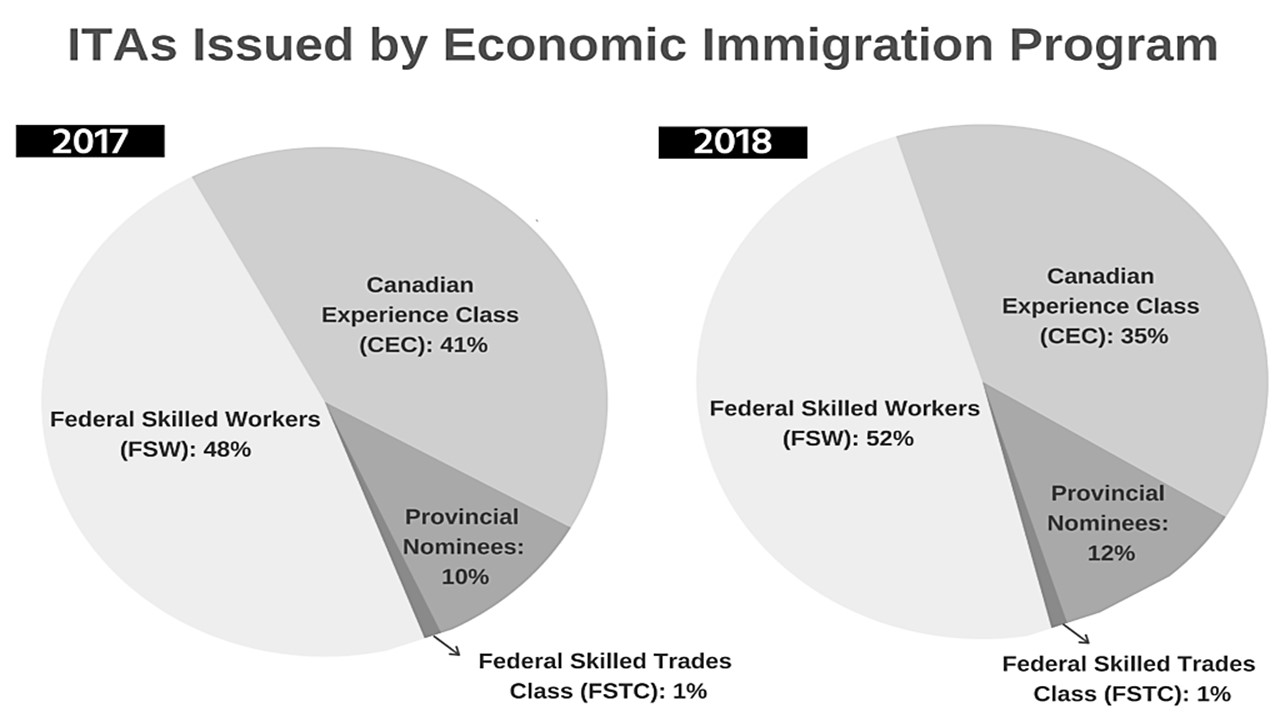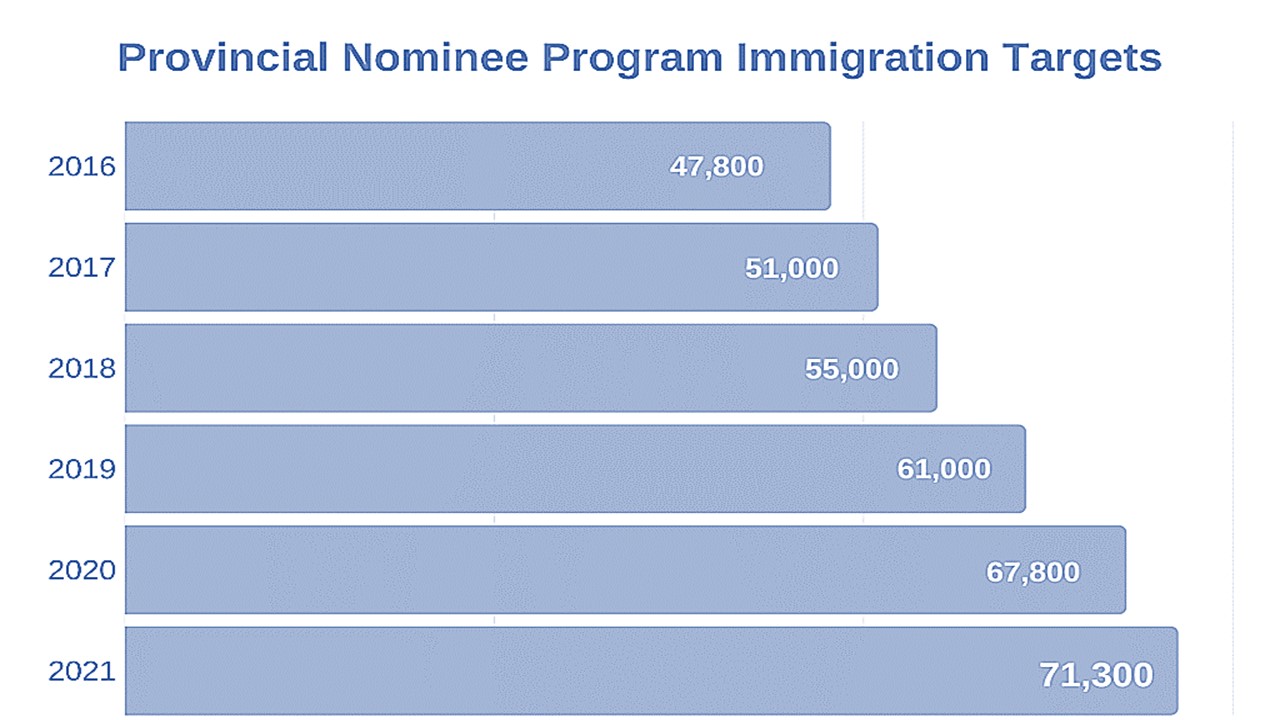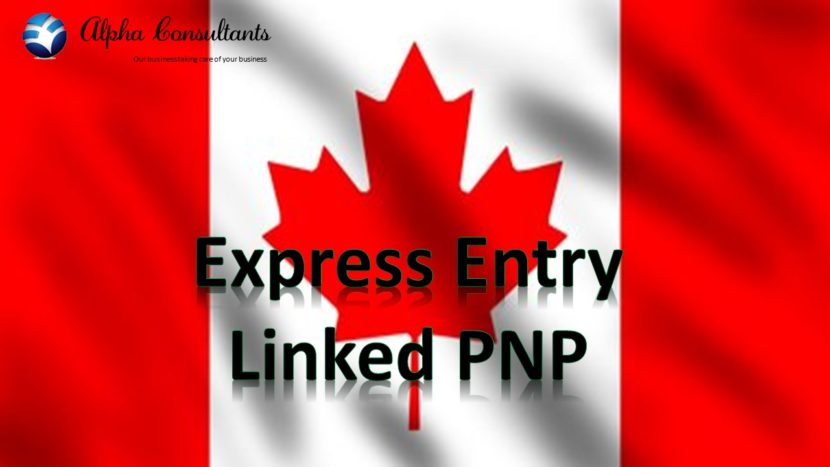Express Entry Invitations with provincial nomination on increase
Bump in 2018 invitations reflects rising prominence of Canada's Provincial Nominee Program
Invitations issued to Express Entry candidates with a provincial nomination for permanent residence are up this year, according to new data from the Government of Canada.
Of the 62,500 Express Entry candidates invited to apply for Canadian permanent residence between January and September, 12 per cent — or roughly 7,500 — had a provincial nomination.
During this same period in 2017, Invitations to Apply (ITAs) issued to Express Entry candidates nominated by a Canadian province or territory stood at just over nine per cent of all invitations issued.
Canada’s Provincial Nominee Program (PNP) works to spread the benefits of immigration more evenly across Canada by allowing participating provinces and territories to nominate a set number of economic immigration candidates for permanent residence each year.
Every province and territory with an immigrant nominee program now has at least one immigration stream that is linked to the federal Express Entry system, which manages the pool of candidates for Canada’s three main federal economic immigration programs — the Federal Skilled Worker Class, Federal Skilled Trades Class and the Canadian Experience Class.
Express Entry candidates who receive a provincial nomination are awarded an additional 600 points toward their Express Entry ranking score, which effectively guarantees an ITA in a subsequent Express Entry invitation round held by Immigration, Refugees and Citizenship Canada (IRCC).

The rising number of candidates in the Express Entry pool with a provincial nomination and the 600 points that go with it may be partly responsible for the increase that we’ve seen in Express Entry minimum scores in 2018, which haven’t gone below 440.
If this trend continues, obtaining a provincial nomination may now be one of the best bets for receiving an ITA for Express Entry candidates with scores below 440.
PNP growing ‘exponentially’
The increase in ITAs issued to provincial nominees reflects the growing importance of the PNP to the federal government’s overall immigration strategy.
Canada’s new multi-year immigration levels plan has admissions through the PNP set to rise by 6,000 next year, to 61,000.
By 2021, these admissions are expected to reach 71,300 — an increase of nearly 30 per cent over 2018’s target of 55,000.

In its 2018 report to Parliament, IRCC noted that the PNP has grown “exponentially” since its implementation in 1996 — from 233 admissions in 1996 to 49,724 in 2017.
Of these nearly 50,000 new permanent residents admitted through the PNP in 2017, 13,531 were Express Entry candidates and their family members. IRCC said this was an increase of 73 per cent over Express Entry admissions in 2016.
PNP reshaping settlement patterns in Canada
The PNP’s growth is also helping alter settlement patterns away from Canada’s largest cities, which have long attracted the vast majority of newcomers to Canada.
Provinces like Nova Scotia, Prince Edward Island, Manitoba and Saskatchewan all have Express Entry-linked nominee programs that have been active in 2018.
IRCC reported that 34 per cent of economic immigrants who arrived in Canada in 2017 were destined outside Ontario, British Columbia and Quebec — the provinces where Toronto, Vancouver and Montreal are located — compared to just 10 per cent in 1997.
A similar trend was identified in a new report by Statistics Canada, which also found that most economic immigrants remain where they first settle, be it a larger city or outside one.
“The initial location decision of [economic principal applicants, or EPAs] is a very strong predictor of their location years later,” the study said. “Indeed, only about 11 per cent of EPAs have moved to or out of [Montreal, Toronto or Vancouver] by 10 years of landing.”

